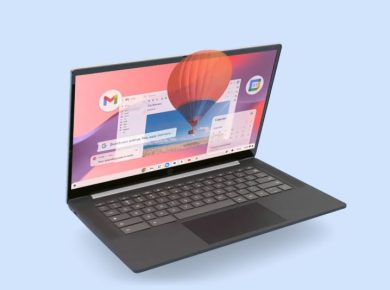Have you ever dreamed of living in a world where the digital and physical seamlessly coexist? Well, that’s not just science fiction anymore. Google’s latest innovation, Android XR, is here to blur those lines. Combining augmented reality (AR) and virtual reality (VR), Android XR is more than just a tech upgrade; it’s a bold step toward wearable computing’s mainstream adoption. Let’s break it all down—what Android XR is, why it matters, and how it could redefine your relationship with technology.
Understanding Android XR
In the simplest terms, Android XR is a specialized version of Google’s Android operating system, optimized for extended reality (XR) devices like smart glasses and mixed reality headsets. Unlike its predecessors, Android XR isn’t just about AR or VR in isolation; it’s about seamlessly integrating both to create mixed reality experiences. Think about gaming, working, or even navigating a city—all while staying immersed in a digital-physical hybrid world.
And here’s the kicker: Android XR works with your favorite Android apps. That’s right—you don’t need to wait for new apps to be developed. The apps you already use, like YouTube, Google Maps, and even productivity tools, can transition into this immersive space without skipping a beat. This backward compatibility makes Android XR a practical leap forward, not just a novelty.
Why Android XR Is Different
Google has been in the AR/VR game before (hello, Google Glass), but Android XR marks a fresh approach. This isn’t about rushing to market with shiny hardware; it’s about building an ecosystem. One major differentiator? Gemini, Google’s generative AI model, is fully integrated into Android XR. Gemini powers natural language interactions, meaning you can point at an object and simply ask, “What is that?”” No complex commands, no clunky interfaces—just seamless interaction.
Core Features of Android XR
Here are some of the standout features that make Android XR a potential game-changer:
1. Gemini AI Integration
The generative AI model, Gemini, enables fluid, conversational interactions. Whether you’re asking it to identify a landmark or multitasking with various apps, Gemini’s natural language processing feels intuitive and human-like.
2. Backward Compatibility
Your existing Android apps work on Android XR devices. From streaming YouTube on a massive virtual screen to navigating Google Maps in AR, the transition is seamless and immediate.
3. Gesture Controls
Android XR supports advanced hand-tracking technology. Draw a circle around an image in your browser, and Android XR will instantly initiate a search for similar items. Simple, practical, and fun.
4. Immersive Entertainment
Whether you’re binge-watching shows on Google TV or flipping through your photo gallery in 3D, Android XR redefines how you consume digital media.
5. Developer-Friendly Platform
Google has gone all-in on making Android XR developer-friendly, with support for ARCore, Unity, and other popular tools. The result? A rapidly growing library of apps tailored to XR experiences.
Real-World Applications
The potential use cases for Android XR are practically limitless. Here are just a few ways it could reshape everyday life:
- Navigation: Picture walking through an unfamiliar city with turn-by-turn AR directions overlaid on your environment. Landmarks highlighted, restaurants labeled—you’ll never feel lost again.
- Productivity: Forget about physical monitors. Android XR lets you create as many virtual screens as you need, all floating in front of you.
- Language Translation: Aim your smart glasses at a sign or menu, and Android XR will translate it in real-time.
- Entertainment: Play AR games in your living room or stream your favorite movies on a virtual IMAX-sized screen.
The First Consumer Device: Samsung’s Project Moohan
Set to launch in 2025, Samsung’s Project Moohan will be the first consumer hardware to feature Android XR. The headset promises a lightweight design, customizable light seals, and support for both AR and VR. Think of it as a hybrid of Apple’s Vision Pro and Meta’s Quest 3 but with the added advantage of Google’s robust Android ecosystem. Early previews suggest that Project Moohan could set a new standard for XR hardware.
Why Google Is Betting Big on XR Now
It’s no coincidence that Google is unveiling Android XR now. With Apple’s Vision Pro garnering buzz and Meta pushing its AI-powered Ray-Ban smart glasses, the XR market is heating up. Google’s competitive edge lies in its massive Android user base and developer community. By integrating XR into an already familiar platform, Google aims to lower the barrier to adoption.
Overcoming Challenges
We’d be remiss not to mention Google Glass, which fizzled out due to privacy concerns and lackluster functionality. Android XR is a more mature attempt, focusing on practical applications and a cohesive ecosystem. Google’s emphasis on security, usability, and developer support suggests they’ve learned from past missteps.
Final Thoughts: Is Android XR the Future?
Android XR isn’t just a platform; it’s a vision for what tech can be when it’s integrated into daily life. By combining the power of AI with mixed reality, Google is positioning itself as a leader in wearable computing. With its focus on usability, developer support, and backward compatibility, Android XR has the potential to go mainstream where others have faltered.
So, what’s next? The launch of Samsung’s Project Moohan will be a pivotal moment. If it delivers on its promise, Android XR could change how we navigate, work, and play in the digital world. One thing’s for sure: the future is going to be immersive, and Android XR might just be the key to unlocking it.





